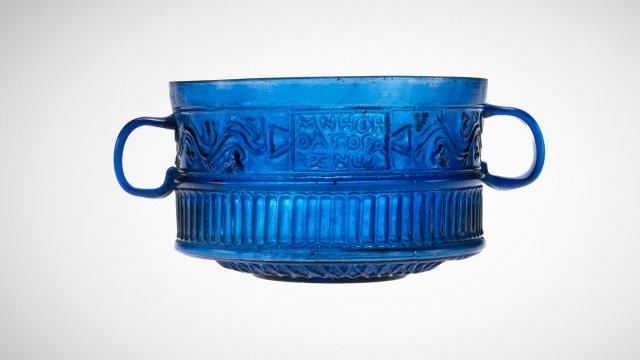Ennion made me. Those were the words that emerged as archeologists brushed centuries of dust off glass vessels in digs all over the classical world, again and again. But who was Ennion? And how, in the early years of the modern world, did he make so much glass?
We don’t know much about him: He was a craftsman in modern-day Lebanon, and a revolutionary one at that. Ennion was the first (known) glassmaker to blow glass into a mould, forming the molten glass into fine decorative details and unusual shapes. This was unheard of, and it made Ennion into a commercial phenomenon in the Roman world. His work has been discovered all over Europe and the Middle East, from “Israel to Spain,” according to the Metropolitan Museum of Art, whose exhibition about Ennion runs until April this year. There are even fake copies of his work made by other shops.
But Ennion wasn’t just prolific. He was also proud, and smart, and knew the value of what 21st century consumers think of as a “brand name.” So unlike other craftsmen and women, Ennion didn’t just sign his pieces or put his name on the bottom: He made his name part of the work. You’ll see the Greek letters for “Ennion epoiese,” or “Ennion made me,” framed by a jug (meta!), as though the words and jug were the whole point of the design:
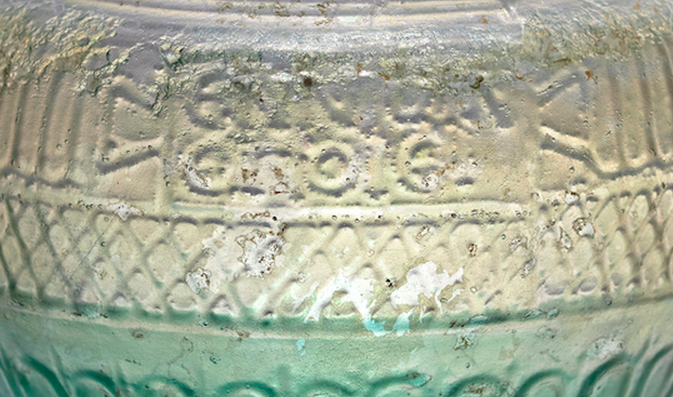
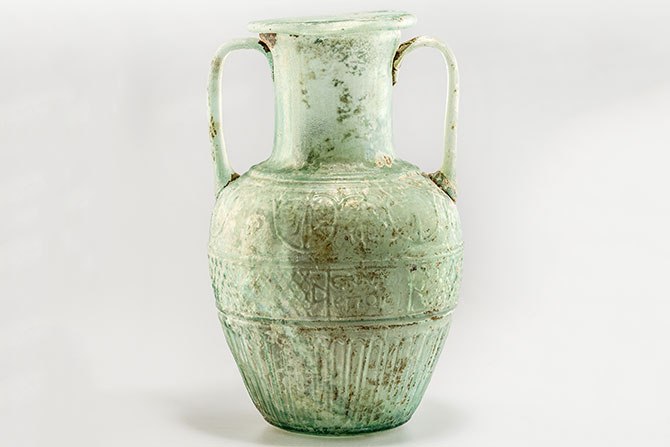
These vessels are “possibly the earliest branded consumer product in history,” says Armin Vit on Brand New. “It’s amusing to learn that 2,000 years ago, Roman glass makers dealt with the pressures of commercial competition just like sneaker and jeans manufacturers do today,” noted the New York Times‘ Ken Johnson. So, asks Haaretz, “Did he invent branding?”
It’s tough to say that anyone really “invented” branding. That’s a pretty fine point to put on a guy who lived 2,000 years ago and who left nothing but his work. After all, brands are a very, very 20th century concept that swept into the world alongside the industrial revolution. Brand names and logos are not just signatures. They’re marks that serve a very specific purpose, one that gets down to the core of capitalism: They distinguish a machine-made object that might look identical to a competitor’s object, if it weren’t for that mark or logo. And they add inherent value.
Ennion was definitely dancing on the edge of what we’d call machine-made objects. He used complicated molds that latched together to make his glass pieces, probably in batches of dozens or even hundreds. Some scholars speculate that he even sold his molds to other workshops across Europe, too. Corning Glass Museum even made an (amazing) video recreating three of Ennion’s surviving works, showing how his technique was fairly mechanised:

And he had copy-cats! Ennion’s exacting molds always hid the seams by integrating them into the design, and that’s exactly how modern-day scholars have exposed some copies as fakes, says E. M. Stern in Roman Mould-blown Glass:
Four unsigned jugs previously attributed to Ennion’s workshop have recently been identified as ancient copies, because the mould seams between the vertical sections are not integrated into the design but run vertically between palmettes.
Even in the first century AD, workshops were trying their best to jack other peoples’ work.
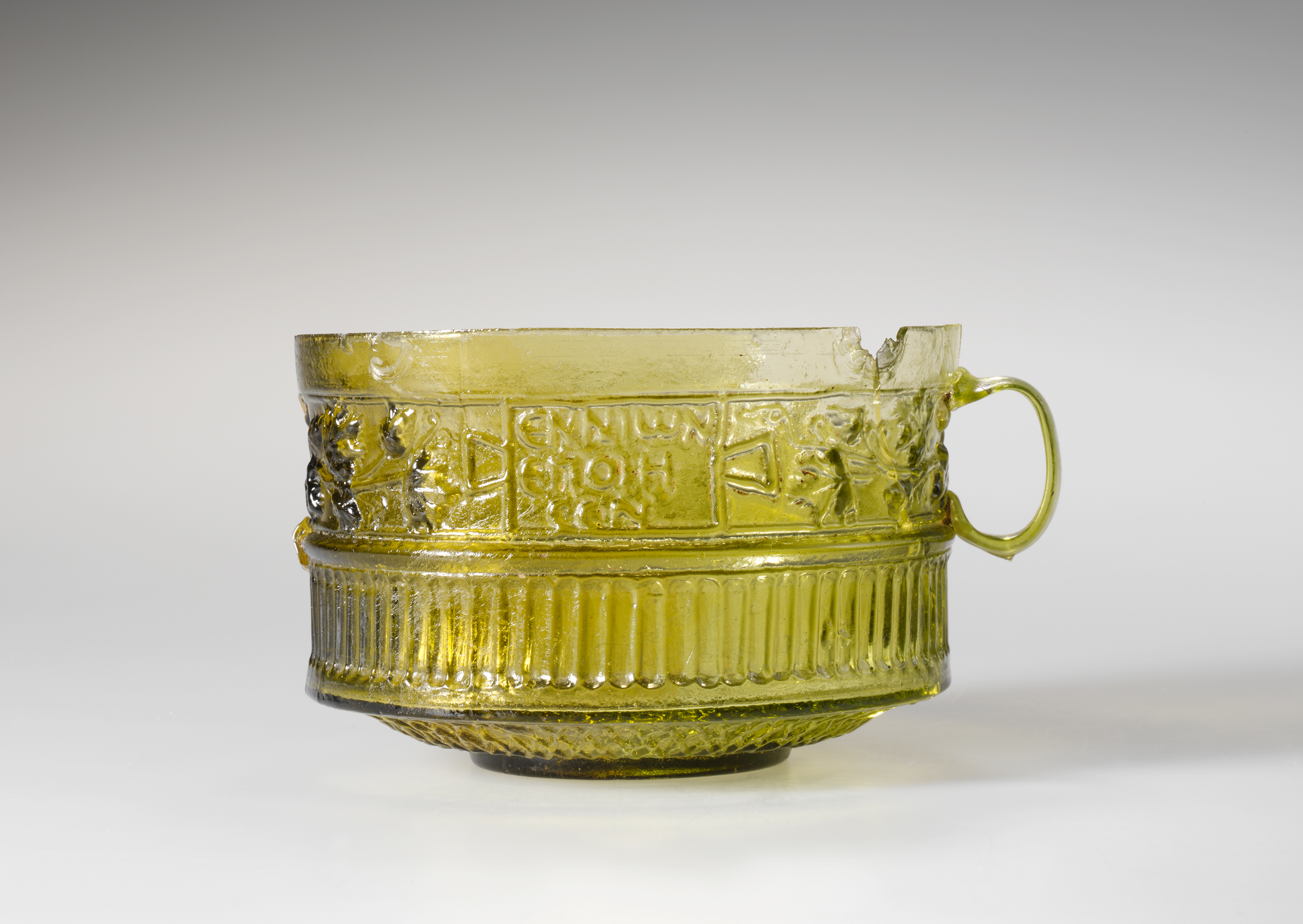
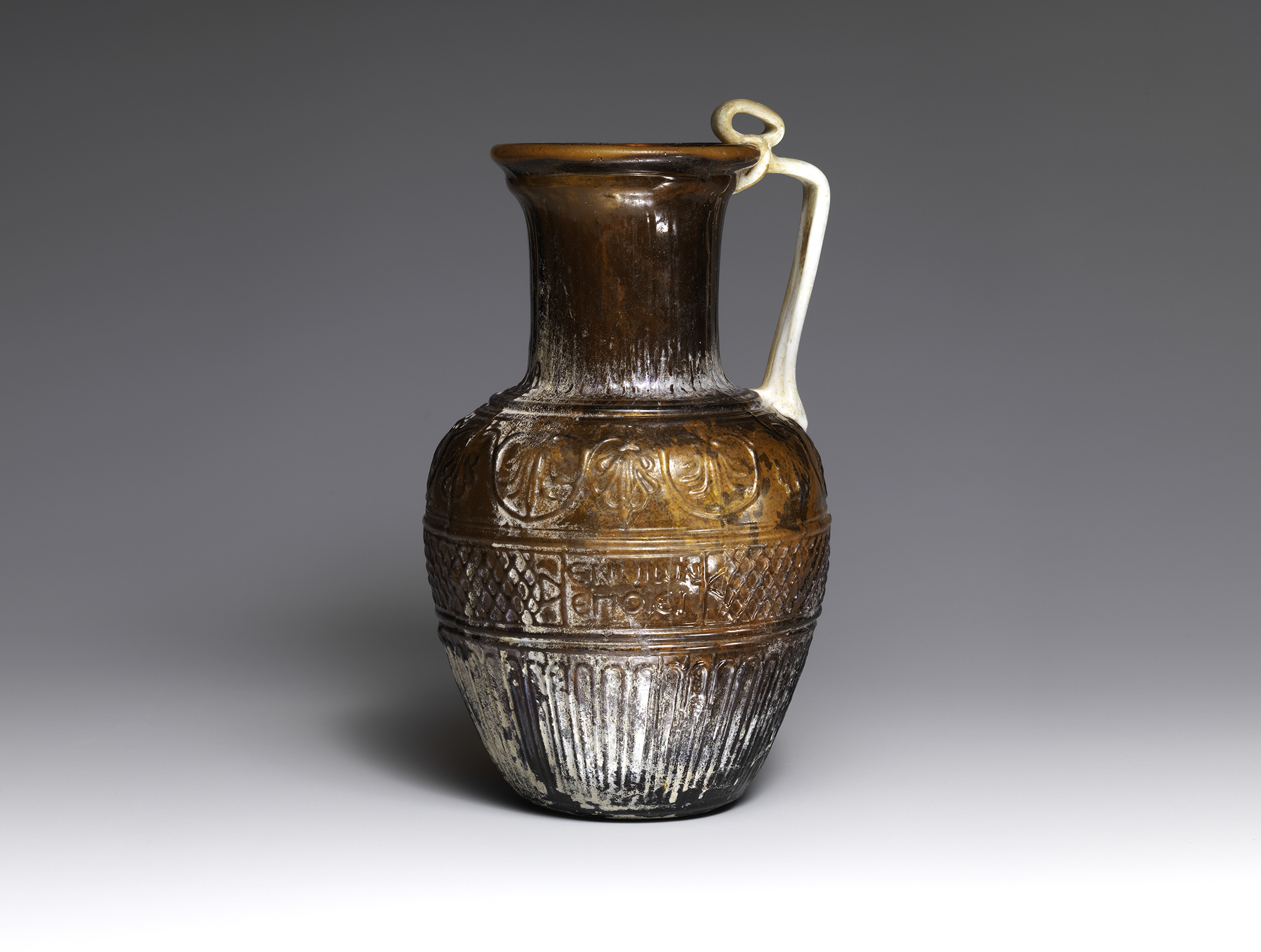
It’s interesting to wonder whether Ennion, who clearly was focused on the present, his business, and his craft, ever considered the way his products would last. Were there other people who made better glass, or even used his techniques first? Either way, Ennion was the one who made it in such volume that at least some of those products would survive thousands of years. It’s less “survival of the fittest” than “survival of the most ubiquitous.”
What objects from our world will survive 2,000 years, into the next civilisation? There’s plenty more from the 21st century than the 1st. But odds seem good that it will be the mass-produced objects — the branded ones that, maybe like Ennion’s, were so popular that a few are bound to survive.
Check out a few more Ennion pieces below — and be sure and stop by the Met if you’re in New York over the next few weeks.

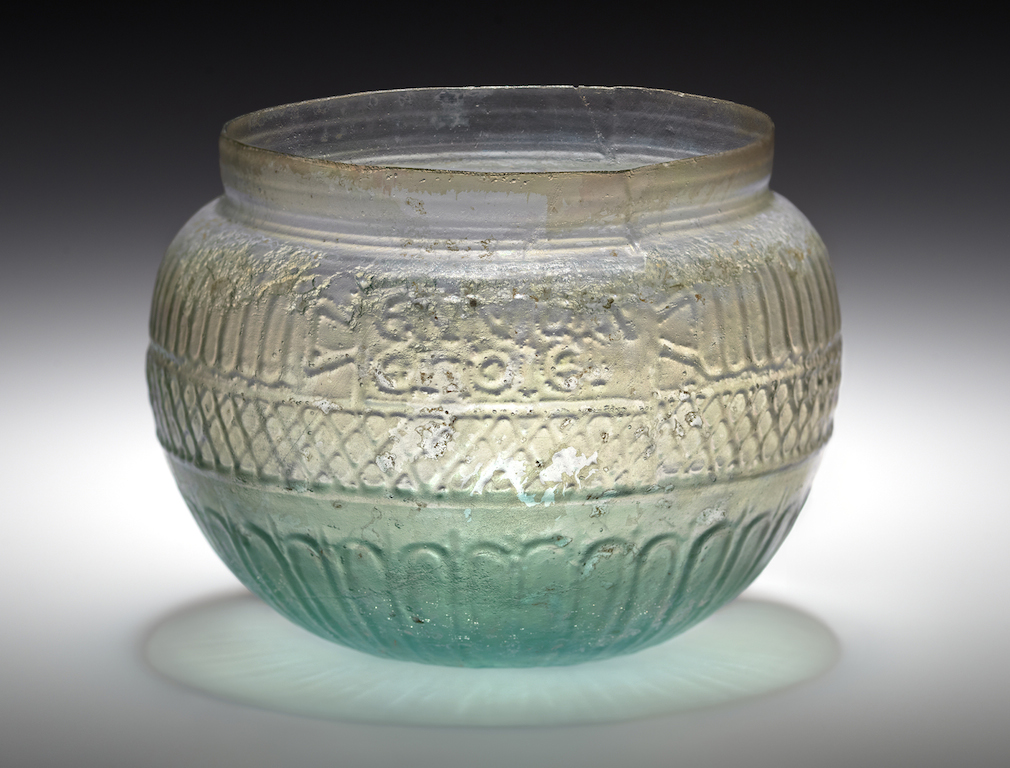
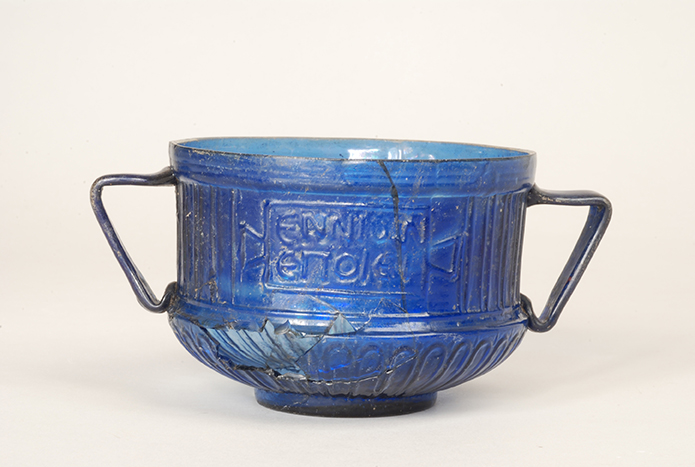
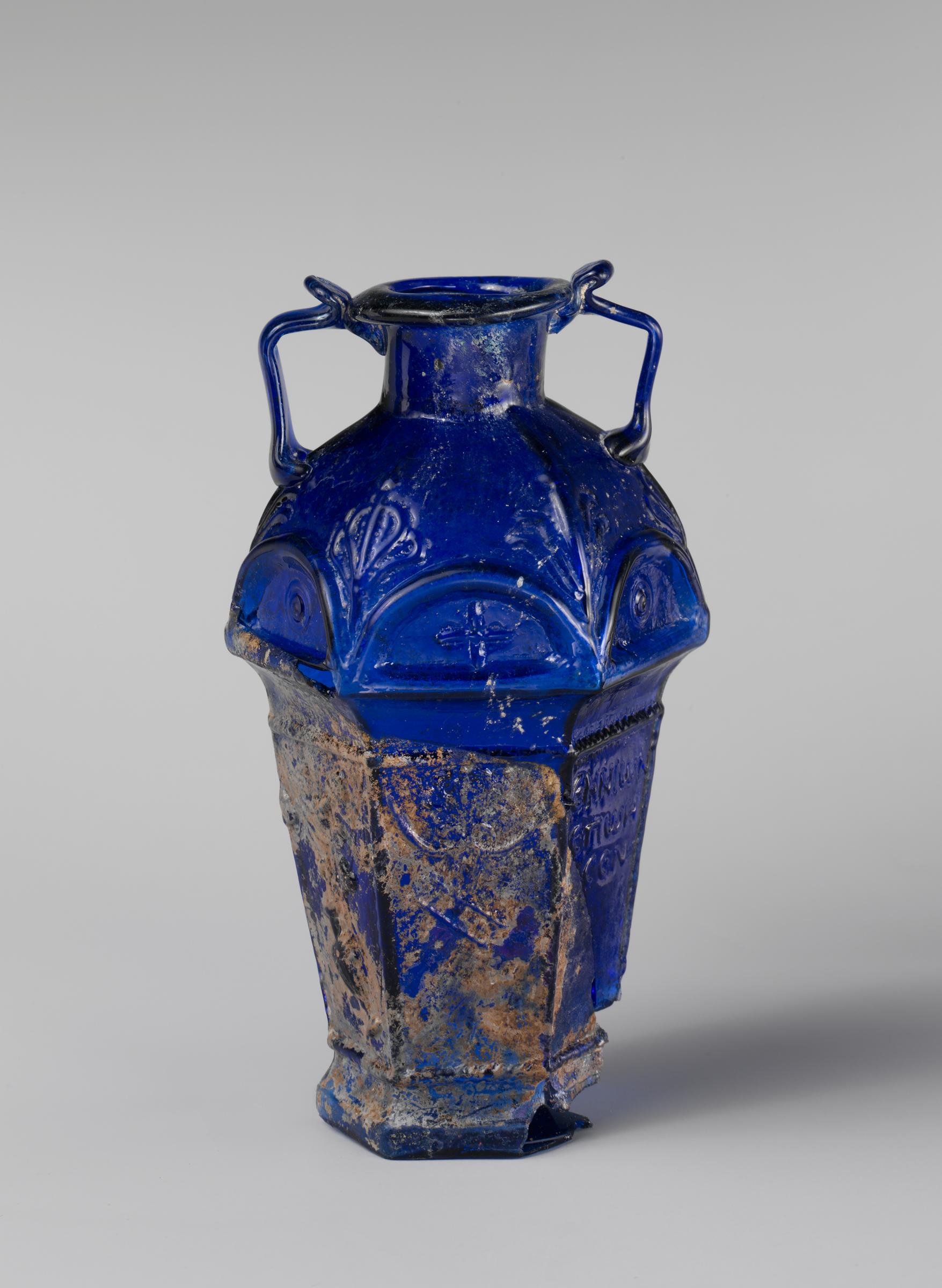
Pictures: Metropolitan Museum of Art
